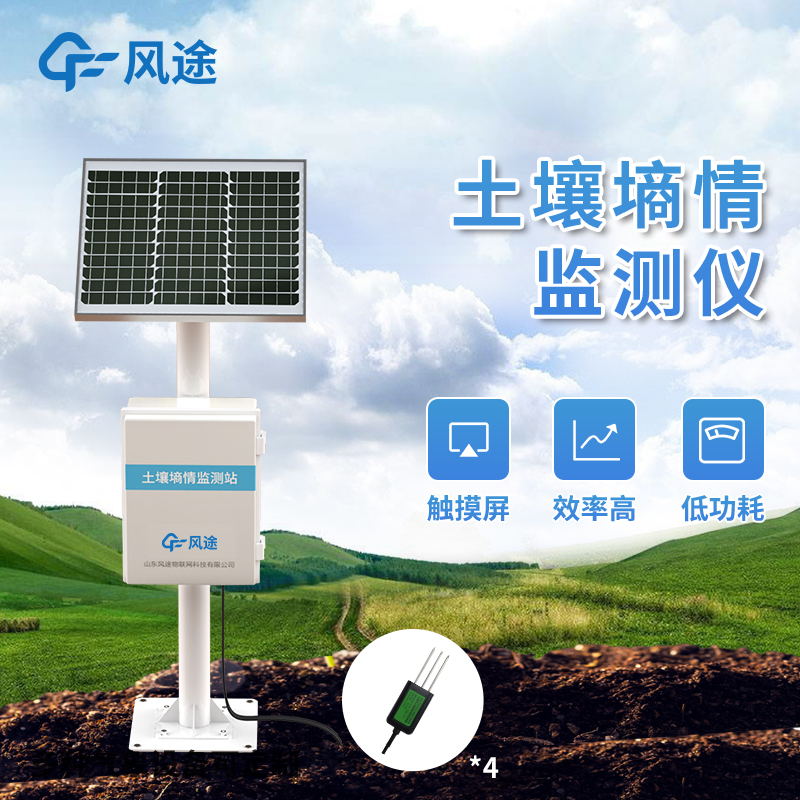Tianqiong Sensor IOT Technology Co., Ltd
Sales Manager:Ms. Emily Wang
Cel,Whatsapp,Wechat:+86 15898932201
Email:info@fengtutec.com
Add:No. 155 Optoelectronic Industry Accelerator, Gaoxin District, Weifang, Shandong, China

Sales Manager:Ms. Emily Wang
Cel,Whatsapp,Wechat:+86 15898932201
Email:info@fengtutec.com
Add:No. 155 Optoelectronic Industry Accelerator, Gaoxin District, Weifang, Shandong, China
time:2025-05-07 10:01:52 source:Weather Station viewed:182 time
Soil moisture refers to the degree of dryness and wetness of the soil, and its value has a profound impact on the growth and development of crops. An appropriate soil moisture level can provide sufficient water for crops, ensuring the vigorous growth of plants and ultimately achieving a dual improvement in both yield and quality. However, when the soil moisture is either too high or too low, it will have a negative impact on crops. For example, excessive moisture may lead to oxygen deficiency in the roots and the proliferation of diseases; while too low moisture will cause water shortage in crops, hindering their growth, and in severe cases, even causing them to wither and die. Therefore, accurately grasping the soil moisture condition is of great significance for agricultural production.
The soil moisture monitoring station was born precisely to meet this need. This system can achieve continuous long-term monitoring of soil moisture. Its core component, the soil moisture sensor, mostly adopts the principle of frequency domain reflectometry. By emitting electromagnetic waves of a specific frequency, it can accurately calculate the soil water content based on the relationship between the soil dielectric constant and the water content. Moreover, users can flexibly arrange the sensors according to the actual monitoring requirements. They can be set at different positions on the same plane or deployed at different depths to obtain the moisture information of the soil profile.
This system has three core functions: Firstly, it enables high-precision real-time monitoring. The sensors can penetrate different depths of the soil to obtain layered data. Secondly, it provides intelligent irrigation control. By linking with the irrigation equipment, it can achieve automated and precise water replenishment. Thirdly, it supports remote management. Farmers can view the data and adjust the parameters anytime and anywhere through a mobile phone APP.
The soil moisture data collected by the sensors will be promptly uploaded to the monitoring center with the help of communication technologies such as GPRS. In the monitoring center, relevant personnel can analyze the data through specialized software, and thus understand the changing trend of soil moisture. Based on these data, farmers can scientifically and reasonably arrange the irrigation time and the amount of irrigation, avoiding the waste of water resources and the damage to the soil structure caused by excessive irrigation, achieving precise irrigation and improving the utilization efficiency of water resources.

The Ultrasonic Wind Speed Direction Sensor achieves measurement based on the characteristics of ultrasonic waves propagating in the air. It accurately calculates the wind speed and direction by measuring the time difference of ultrasonic waves propagating in different directions. This non-mechanical...
In the field of photovoltaic power generation, accurate environmental data monitoring is crucial for improving power generation efficiency, and all of this is inseparable from reliable professional equipment.The Photovoltaic Weather Station FT-WQX8B is a comprehensive environmental monitoring device...
In the fields of meteorological monitoring and hydrology, the piezoelectric rain gauge and the Radar Precipitation Sensor Rain Gauge Distrometer are commonly used rainfall monitoring devices. Today, the author will compare the differences between the two.The piezoelectric rain gauge works by u...
In the field of geological hazard monitoring and early warning (such as landslides, collapses, ground subsidence, debris flows, etc.), GNSS monitoring stations are a core technical means used for accurately measuring surface displacement and deformation.GNSS equipment precisely determines its absolu...